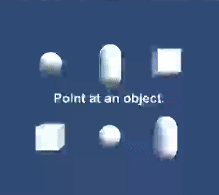Week 8, Part 2: 6 - 13 April [Vuforia Controller continued, 3D Printing]
From further reading I learnt Vuforia can recognise scanned
3D models/objects in a similar way to that which it identifies database images.
3D printing a controller for use in the application would
improve user engagement and understanding. As there is no way to make the users
hand appear in front of the rendered models with only a single device camera,
having a 3D controller, with defined button areas the users can feel would
assist with any confusion experienced if models overlap their hands.
These defined areas would then be used to secure physical
images to the model, to maintain the functionality of virtual buttons.
Not having 3D printed before, I sought the advice of the
universities 3D technologist, regarding printing 3D model for recognition. This
gave me a good foundation to conduct my own research.
I learnt that using software to hollow the model, then
create an internal lattice within the model will “reduce the mass and weight of
the object which means less material used and a lower price” (sculpteo.com, 2017) while increasing
print efficiency.
Splitting the model into two halves would reduce the need
for support filament (to suspend portions of the model not in contact with the
printer floor during printing), further reducing cost and improving the finish
on the model - as areas with support filament attached will need to be sanded
down.
Having familiarised myself with the practicalities of 3D
printing, I produced a scale model design of a suitable controller in blender,
cut the model in half and exported the resulting file (as .stl).
Following this I returned to the universities 3D labs to
explain my method of printing, the 3D technologist agreed to print the model on
the above basis.
In my reading I did come across RFID tags being printed onto
models, or parts of models being cut away so tags could be inserted. While this
is out of scope for this project, the potential applications would be
interesting to explore at a later date.
References:
- 3D Hubs. (2018). How does part orientation affect a 3D Print?. [online] Available at: https://www.3dhubs.com/knowledge-base/how-does-part-orientation-affect-3d-print [Accessed 12 Apr. 2018].
- 3D Hubs. (2018). Supports in 3D Printing: A technology overview. [online] Available at: https://www.3dhubs.com/knowledge-base/supports-3d-printing-technology-overview [Accessed 12 Apr. 2018].
- 3D Printing for Beginners. (2018). 11 Experts Share Their Top 3D Printing Beginner Tips | 3D Printing for Beginners. [online] Available at: http://3dprintingforbeginners.com/3d-printing-tips/ [Accessed 12 Apr. 2018].
- PatentYogi. (2018). Disney discloses technology to 3D print RFID tags on 3D printed objects to limit unauthorized copying - PatentYogi. [online] Available at: https://patentyogi.com/historical-inventions/disney-discloses-technology-to-3d-print-a-model-of-an-identification-id-element-on-3d-printed-objects-to-limit-unauthorized-copying/ [Accessed 12 Apr. 2018].
- Recrosio, E. (2018). Optimize your 3D Printed Parts with Lattice Structures. [online] 3D Printing Blog: Tutorials, News, Trends and Resources | Sculpteo. Available at: https://www.sculpteo.com/blog/2017/05/24/optimize-your-3d-printed-parts-with-lattice-structures/ [Accessed 12 Apr. 2018].


Comments
Post a Comment